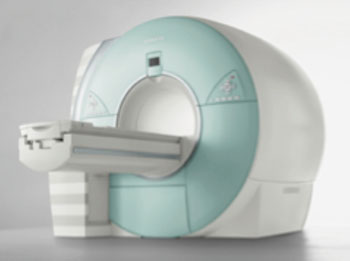MRI Technique Allows for “Fingerprinting” of Tissues and Diseases for Faster Diagnoses
By MedImaging International staff writers
Posted on 26 Aug 2015
New findings published in the journal Nature indicate that a new Magnetic Resonance Imaging (MRI) technique, called Magnetic Resonance Fingerprinting (MRF), could provide much more information with each measurement, at a lower cost than traditional MRI imaging.Posted on 26 Aug 2015
The researchers changed different parts of the input electromagnetic fields of the scanner, making the received signal sensitive to four physical properties. The technique provided researchers with a unique fingerprint for each type of tissue, disease, or material in the body. The researchers then used pattern recognition to chart the patterns and used quantitative estimates to distinguish tissue types.

Image: Siemens Healthcare MAGNETOM Avanto 1.5-T MRI Scanner (Photo courtesy of Siemens Healthcare).
The research was carried out by scientists from the Case Western Reserve University (CWRU; Cleveland, OH, USA), University Hospitals Case Medical Center (UH; Cleveland, OH, USA), and Siemens Healthcare (Erlangen, Germany) and could help clinicians identify specific cancers, multiple sclerosis, heart disease, and others.
Mark Griswold, professor of radiology at Case Western Reserve School of Medicine, said, “The overall goal is to specifically identify individual tissues and diseases, to hopefully see things and quantify things before they become a problem. But to try to get there, we’ve had to give up everything we knew about the MRI and start over.”
The group expects to reduce scanning time and continue to build the library of MRF fingerprints in the coming years. In the future MRF even could be used to determine whether tissue is healthy or not, and the type, and severity of the disease.
Related Links:
CWRU
UH Case Medical Center
Siemens Healthcare










 Guided Devices.jpg)



